#crispus attucks
Text




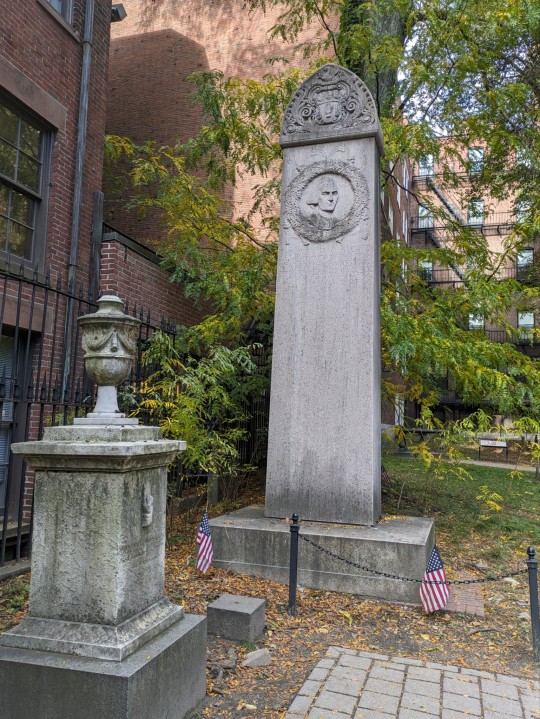
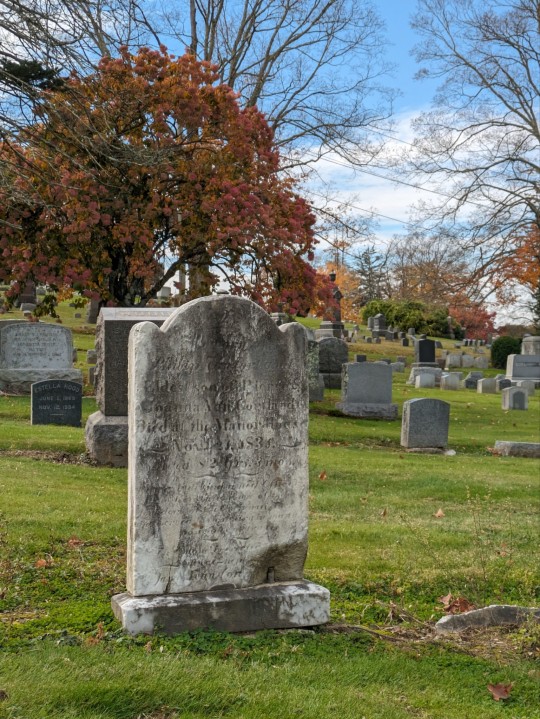
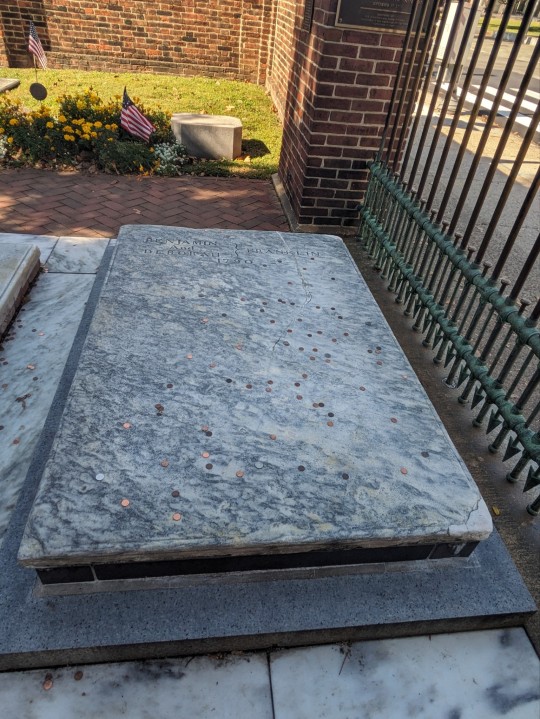
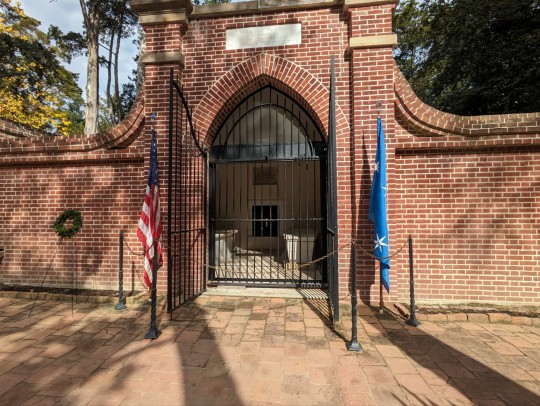
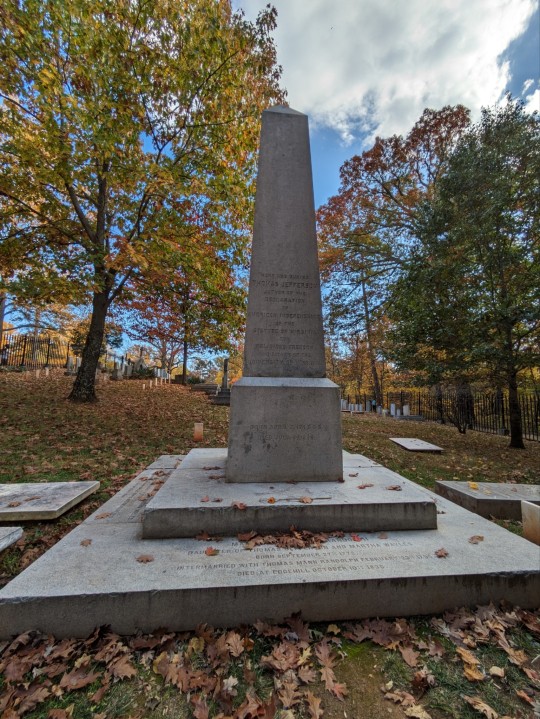
Some graves I saw this week.
General Philip Schuyler
The victims of the Boston massacre
Samuel Adams
Paul Revere
John Hancock
Philip Van Cortlandt
Benjamin Franklin
George Washington
Thomas Jefferson
RIP daddies and Happy Halloween 🎃
#Philip Schuyler#Samuel Adams#John Hancock#Philip Van Cortlandt#Benjamin Franklin#George Washington#Thomas Jefferson#Boston Massacre#crispus attucks#samuel gray#samuel maverick#james caldwell#patrick carr#american revolution#18th century
27 notes
·
View notes
Text


Boston Massacre/Crispus Attucks Monument - Boston, Massachusetts.
2 notes
·
View notes
Photo

"Crispus Attucks," by Herschel Levit, mural at the Recorder of Deeds building, built in 1943
Crispus Attucks (c. 1723 – March 5, 1770) was an American whaler, sailor, and stevedore of African and Native American descent, who is traditionally regarded as the first person killed in the Boston Massacre, and as a result the first American killed in the American Revolution.
While he is widely remembered as the first American casualty of the American Revolutionary War, 11-year-old Christopher Seider was shot a few weeks earlier by customs officer Ebenezer Richardson on February 22, 1770. Historians disagree on whether Attucks was a free man or an escaped slave, but most agree that he was of Wampanoag and African descent. Two major sources of eyewitness testimony about the Boston Massacre published in 1770 did not refer to him as black or as a Negro; it appears he was instead viewed by Bostonians as being of mixed ethnicity. According to a contemporaneous account in the Pennsylvania Gazette, he was a "Mulattoe man, named Crispus Attucks, who was born in Framingham, but lately belonged to New Providence, and was here in order to go for North Carolina."
Attucks became an icon of the anti-slavery movement in the mid-19th century. Supporters of the abolition movement lauded him for playing a heroic role in the history of the United States.
#Crispus Attucks#people in history#anti-slevery movement#xviii century#Herschel Levit#murales#art#arte#Rocerder of Deeds
6 notes
·
View notes
Text

So why didn't we learn about this in #School see this that stuff I be talking about y'all make us learn what y'all want us to learn while sweeping all the shit we should be learning under the rug I guess our parents learn from the government….
1 note
·
View note
Note
How do you know so much about historical succession rules? Is it a special interest or did you study history/related field? Letting you know I really enjoy your rants about it.
I do have a degree in Modern History, though having typed that I think the name may be misleading as "Modern" was anything from 1500 CE onwards and I did a lot of 18th century stuff. (I did a bit of Medieval History as well, but only the first two years. Ironically that was because I got sick of everything being about kings all the fucking time!) That was years ago, but I've kept an interest in history since then.
But my knowledge of European (mostly English) monarchies isn't really from that (I mostly did revolutions back at uni) it's that mental health issues stopped me reading books for YEARS and then I somehow discovered (can't remember how) that I could cope with historical novels of the Philippa Fucking Gregory sort, which is maybe odd but we do live in an odd world. This has since allowed me back into other genres and also into non-fictional history, and (you can see where this is going, right?) left me knowing a fair bit about roughly the Tudor period of English history.
Now, I don't like monarchies. I do my best not to know too much about the current British lot - spitefully so, even! - but that bit of time from about the Wars of the Roses to the end of the Tudors is part soap-opera and part-trainwreck. The sort of WTF drama that you just cannot look away from. Everyone's related to everyone else and there's quite a lot of scandal and murder and that sort of thing. This is how I, such an obvious intellectual, got drawn into the world of not-exactly-literary historical novels, aided by my existing knowledge of the vague plot outlines that I learned at university. And I just sort of picked up more information as I read the same few stories over and over again written by different authors.
For those lucky enough not to have been consumed by this stuff, the main plot of both the Wars of the Roses and the Tudor era monarchy is "oh no, mah succession!! D: D:" so this is why I know that stuff specifically. Luckily for everyone this has only fairly recently been in any way relevant to any fandom I'm in, though the historian in me must here point out that Early Medieval Scandanavian Monarchy Rules aren't always the same as Early Modern English Succession Rules, but I don't think the MCU knows that either and fuck it everyone in these films has magic powers anyway.
It's not a special interest as I am not neurodiverse (at least in that specific way) I'm just a bit weird and also a nerd.
#replies#i believe i am technically neurodiverse due to OCD but i don't identify as such as i feel like i'm not the right sort and it'd confuse folk#but with this thing it's just that i'm a bit of a nerd (which is fine! it's valid!)#i've been avoiding that Hamilton thing because the American Revolutionary War period could also get addictive I feel#the 18th century was - IMO - a period of the flourishing of batshit insane middle-class chancers with unprecedented access to power#in a good way!! suddenly 5 extra people can vote! and most of those people are very driven and slightly strange!#(my knowings of this era have yet to prove useful in fandom other than i knew who Crispus Attucks was when watching Luke Cage)#about me
14 notes
·
View notes
Text
Reading nonfiction is always a treat bc wdym Phillis Wheatley’s poems were bound in human skin TWICE??? Is Boston just like that???
#kyne shouts#they got the book made from that one highwayman too#and one of the most famous fakes was a book claimed to be bound in the skin of the first man to die in the Boston massacre#who’s name I’m going to switch tabs to remember how to spell now.#it was Crispus Attucks. he was not turned into a book
1 note
·
View note
Photo

African Americans in the American Revolution
On the eve of the American Revolution (1765-1789), the Thirteen Colonies had a population of roughly 2.1 million people. Around 500,000 of these were African Americans, of whom approximately 450,000 were enslaved. Comprising such a large percentage of the population, African Americans naturally played a vital role in the Revolution, on both the Patriot and Loyalist sides.
Black Patriots
On 5 March 1770, a mob of around 300 American Patriots accosted nine British soldiers on King Street in Boston, Massachusetts. Outraged by the British occupation of their city, as well as the recent murder of an 11-year-old boy, the crowd was filled with Bostonians from all walks of life; among them was Crispus Attucks, a mixed-race sailor commonly thought to have been of African and Native American descent. When the British soldiers fired into the crowd, Attucks was struck twice in the chest and was believed to have been the first to die in what became known as the Boston Massacre. He is regarded, therefore, as the first casualty of the American Revolution and has often been celebrated as a martyr for American liberty.
Five years later, in the early morning hours of 19 April 1775, a column of British soldiers was on its way to seize the colonial munitions stored at Concord, Massachusetts, when it was confronted by 77 Patriot militiamen on Lexington Green. Standing in this cluster of militia was Prince Estabrook, one of the few enslaved men to reside in Lexington, who had picked up a musket and joined his white neighbors in defending his home. In the ensuing Battles of Lexington and Concord, Estabrook was wounded in the shoulder but recovered in time to join the Continental Army two months later. He was selected to guard the army headquarters at Cambridge during the Battle of Bunker Hill (17 June 1775) and was freed from slavery at the end of the war.
Attucks and Estabrook were just two of the tens of thousands of Black Americans who supported the American Revolution. There was no single motivation for their doing so. Some, of course, were inspired by the rhetoric of white revolutionary leaders, who used words like 'slavery' to describe the condition of the Thirteen Colonies under Parliamentary rule and promised to forge a new society built on liberty and equality. These words obviously appealed to the enslaved population, many of whom were optimistic that, even if slavery was not entirely abolished, they might receive better opportunities in this new nation. Others enlisted in the Continental Army to secure their individual freedoms, as the Second Continental Congress had proclaimed that any enslaved man who fought the British would be granted his freedom at the end of his service. African Americans also enlisted to escape the day-to-day horrors of slavery, to collect the bounties and soldiers' pay offered by recruiters, or simply because they were drawn to the adventure of a soldier's life. Additionally, several Black Americans were forced to enlist by their Patriot masters, who preferred to send their slaves to fight instead of going themselves.
Of course, not all Black Patriots served in the Continental Army or Patriot militias. Some, like James Armistead Lafayette, were spies; posing as a runaway slave, Lafayette was able to infiltrate the British camp of Lord Charles Cornwallis and procure vital information that helped lead to the Patriot victory at the Siege of Yorktown. The French general Marquis de Lafayette was impressed with his service and helped procure his freedom after the war, leading James Lafayette to adopt the marquis' name.
Other Black Patriots showed their support for the movement with their words. Phillis Wheatley was an enslaved young woman who had been brought to Boston from Senegal, where she had been seized. She was purchased by the Wheatley family, who quickly recognized her literary talents and encouraged her to write poetry. By the early 1770s, Phillis Wheatley was already a celebrated poet. She began to write extensively on the virtues of the American Revolution, praising Patriot leaders like George Washington. Despite his status as a slaveholder, Washington was moved by Wheatley's work and invited her to meet him, stating that he would be honored "to see a person so favored by the muses" (Philbrick, 538).
Continue reading...
58 notes
·
View notes
Text

The strong presence of the sea is grossly under-examined in American literature, doubly so in African American literature. As Elizabeth Schultz observes, "Historically and culturally, the African American experience has been an inland one. Black Americans," she continues, "have not generally turned seaward in their literature." Although she comes to a "however" that adds the observation "the sea is not absent from African American literature," the rhetorical pose imagined in the claim that "the sea is not absent" is that it will take a good deal of searching to find it. And yet, as Jeffery Bolster observes in his ground-breaking 1997 study Black Jacks, "Sailors wrote the first six autobiographies of blacks published in English before 1800". Many of these autobiographies carry clear abolitionist intent and hint at the type of anti-slavery discussions carried on by sailors around the Atlantic world. When scholars of African American literature turn their attention to works written by sailors, like Olaudah Equiano's The Interesting Narrative of the Life of Olaudah Equiano, or Gustavas Vassa, the African. Written by Himself (1789), most suffer from the misplaced assumption Schultz points to, and thus fail to see the crucial link between sailors and black abolitionism. Indeed, what Crispus Attucks, Paul Cuffee, Robert Smalls, Frederick Douglass, and so many other black revolutionaries in America have in common is that they were all sailors or in some other way directly connected to the maritime trades.
— Matthew D. Brown, 2013. “Olaudah Equiano and the Sailor’s Telegraph: The Interesting Narrative and the Source of Black Abolitionism.” Callaloo: A Journal of African Diaspora Arts and Letters 36 (1): 191–201. doi:10.1353/cal.2013.0059 (Google Drive link)
‘Drunken Sailors’ by John Locker, 1829 (NMM)
#age of sail#black history#black sailors#sailors#naval history#maritime history#atlantic world#abolitionism#black jacks#olaudah equiano#john locker#maritime art#black history month
179 notes
·
View notes
Text
Original publishing date, February 27, 2023.
["The 317 Project tells stories of life in all of Indianapolis’ vibrant neighborhoods – 317 words at a time.
"...Walk a little further and you'll hear the history of Black people as told by Black voices. Striking is a passage on the Civil War: "Northern powers, forced to liberate African people from slavery... to end southern economic power."
Forced to liberate... A reminder that, for some, ending slavery was incidental to preserving the Union."]
A local history museum that's also inside a high school, Crispus Attucks, the first all-black high school in Indiana.
A side note, for those of you interested in Black American history, the history of the Black community in Indianapolis and Indiana in general is very unique, so there's a topic to start looking into if you want a rabbit-hole to go down.
54 notes
·
View notes
Text
Engrav'd Printed & Sold by Paul Revere Boston
Published around March 28th 1770
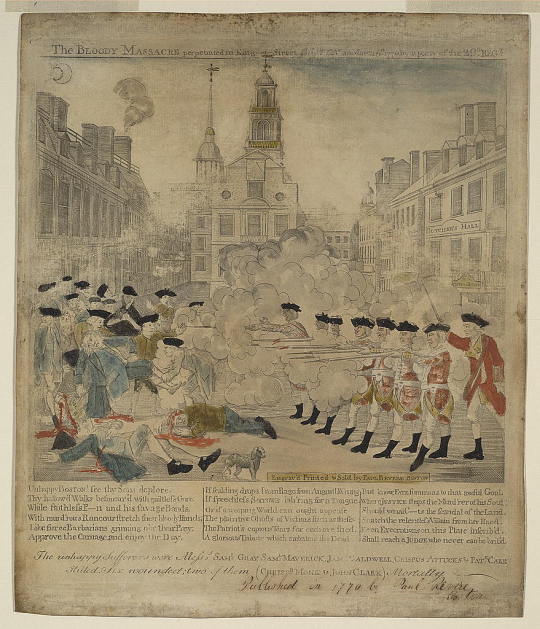
#Boston massacre#paul revere#British 29th reg#crispus attucks#samuel gray#samuel maverick#james caldwell#patrick carr#american revolution#18th century
10 notes
·
View notes
Photo

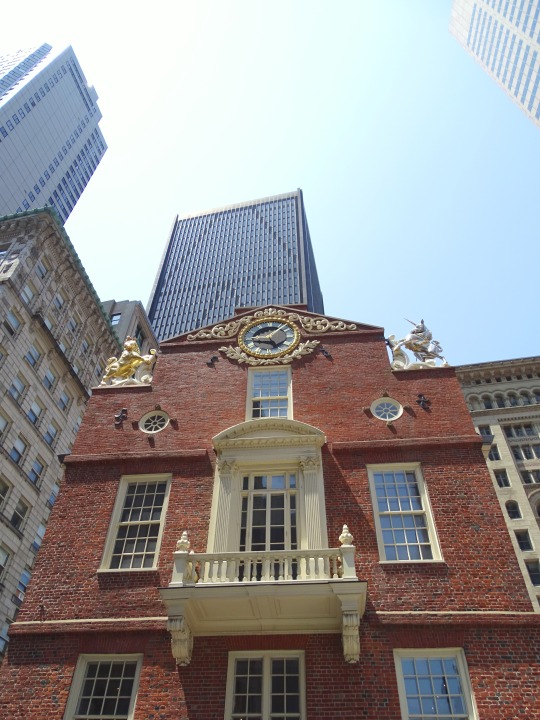
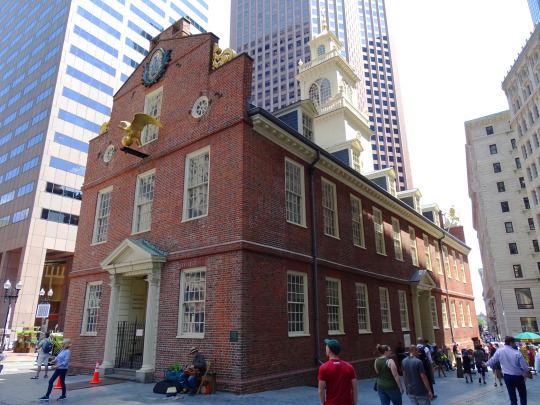
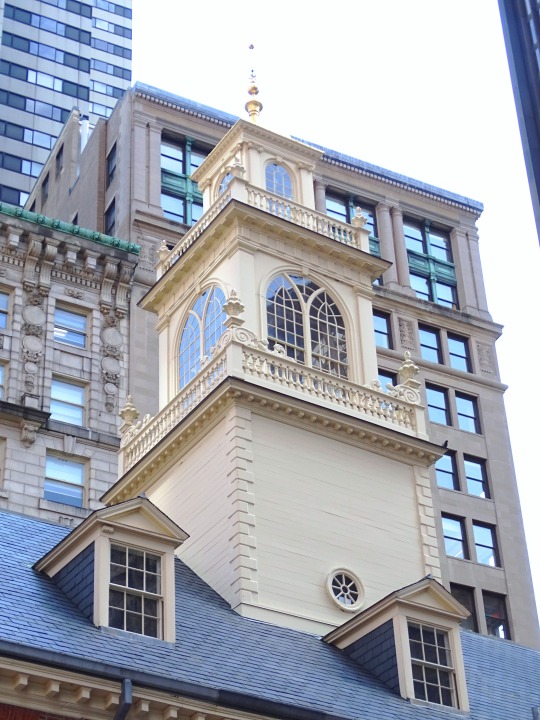

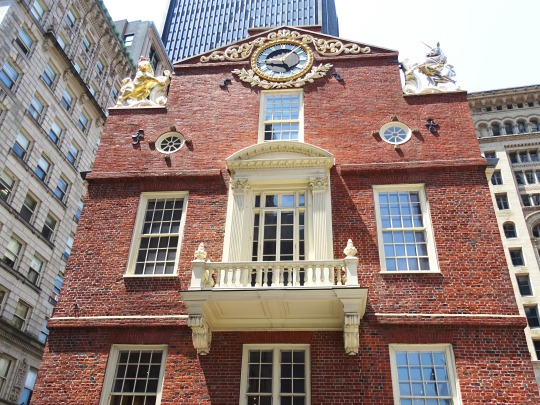

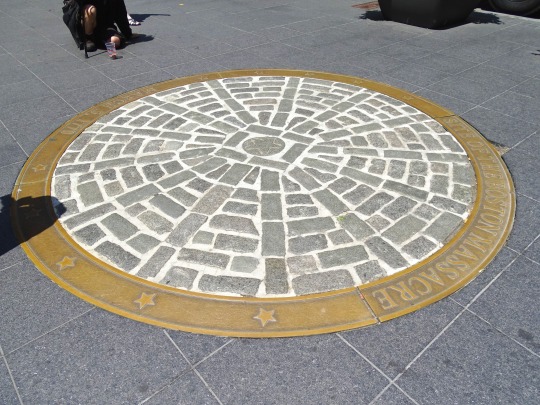
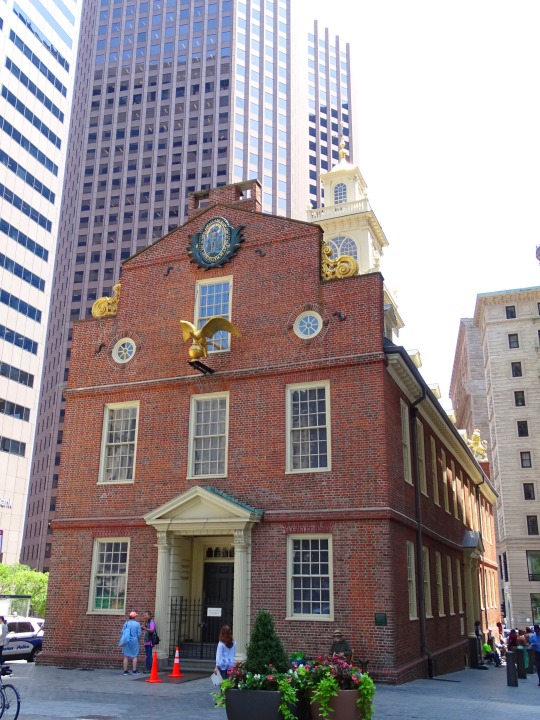
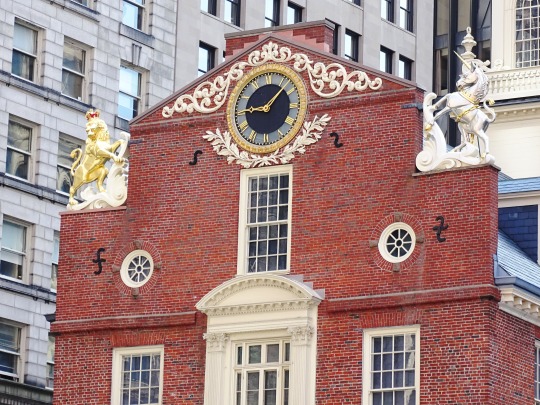
Boston Massacre, March 5, 1770: Five Americans, including Crispus Attucks, are fatally shot by British troops in an event that would contribute to the outbreak of the American Revolutionary War (also known as the American War of Independence) five years later.
#Boston Massacre#5 March 1770#anniversary#US history#Boston#USA#Old State House#Thomas Joy#Thomas Dawes#Georgian style#exterior#summer 2018#Massachusetts#New England#Freedom Trail#architecture#cityscape#vacation#travel#British history#detail#tourist attraction#landmark#original photography
54 notes
·
View notes
Text
17 notes
·
View notes
Text
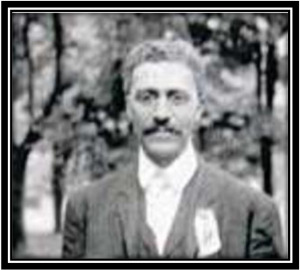
Attorney Lafayette McKenne Hershaw (May 10, 1863 – September 2, 1945) was a journalist, lawyer, clerk, and law examiner for the General Land Office of the Department of the Interior. He was a key intellectual figure among African Americans in Atlanta in the 1880s and DC, from 1890 until his death. He was a leader of intellectual social groups in the capital such as the Bethel Literary and Historical Society and the Pen and Pencil Club. He was a strong supporter of W. E. B. Du Bois was one of the thirteen organizers of the Niagara Movement, the forerunner to the NAACP. He was an officer of the DC Branch of the NAACP from its inception until 1928. He was a founder of the Robert H. Terrell Law School and served as the school’s president.
He began his studies at Atlanta University in 1879 and received a BA from the school in 1886. He studied law at Howard University and received an LL.B. in 1892.
He belonged to the Oldest Inhabitants Association of the District of Columbia and was a trustee of Atlanta University. Along with frequently speaking at the Second Baptist Lyceum, the Congressional Lyceum, and as an officer of the Bethel Literary and Historical Society; he was president of the Shiloh Baptist Lyceum. He was elected head of the newspaper bureau of the National Afro-American Council. He was elected president of the Crispus Attucks Association and presided over a celebration of the anniversary of the birth of Abraham Lincoln. He was a member of Sigma Pi Phi and Phi Beta Sigma Fraternities.
He began to become more involved in the American Negro Academy. He was a member of the executive committee of that body along with Kelly Miller, J. E. Moorland, Francis J. Grimké, A. U. Craig, F. H. M. Murray, and John W. Cromwell. He was elected treasurer under presidents Cromwell and then Arthur A. Schomberg.
He served as first vice president along with second vice president R. W. Thompson under the presidency of Walter J. Singleton in the Mu-So-Lit club, representing DC’s musical, social, and literary professionals. #africanhistory365 #africanexcellence #phibetasigma #sigmapiphi
2 notes
·
View notes
Text
JUNKIE SCHOLAR MINI READING #1
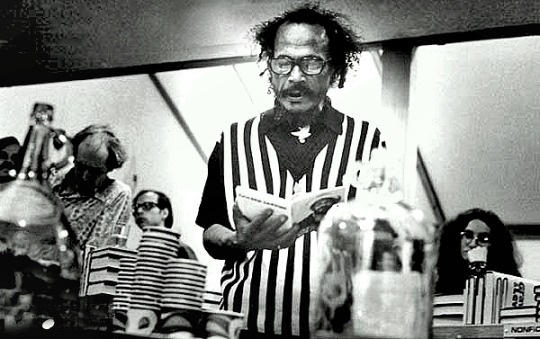
THE NIGHT THAT LORCA COMES
SHALL BE A STRANGE NIGHT IN THE
SOUTH, IT SHALL BE THE TIME WHEN NEGROES LEAVE THE
SOUTH
FOREVER,
GREEN TRAINS SHALL ARRIVE
FROM RED PLANET MARS
CRACKLING BLUENESS SHALL SEND TOOTH-COVERED CARS FOR
THEM
TO LEAVE IN, TO GO INTO
THE NORTH FOREVER, AND I SEE MY LITTLE GIRL MOTHER
AGAIN WITH HER CROSS THAT
IS NOT BURNING, HER SKIRTS
OF BLACK, OF ALL COLORS, HER AURA
OF FAMILIARITY. THE SOUTH SHALL WEEP
BITTER TEARS TO NO AVAIL,
THE NEGROES HAVE GONE
INTO CRACKLING BLUENESS.
CRISPUS ATTUCKS SHALL ARRIVE WITH THE BOSTON
COMMONS, TO TAKE ELISSI LANDI
NORTH, CRISPUS ATTUCKS SHALL
BE LAYING ON BOSTON COMMONS,
ELISSI LANDI SHALL FEEL ALIVE
AGAIN. I SHALL CALL HER NAME
AS SHE STEPS ON TO THE BOSTON
COMMONS, AND FLIES NORTH FOREVER,
LINCOLN SHALL BE THERE,
TO SEE THEM LEAVE THE
SOUTH FOREVER, ELISSI LANDI, SHE WILL BE
GREEN.
THE WHITE SOUTH SHALL GATHER AT
PRESERVATION HALL.
— Bob Kaufman, year unknown?
Bob Kaufman was, it’s often said, a poet of the streets, a poet whose life and work manifested a deep knowledge of its nooks and crannies, its hustles, its dogged, imaginative techniques of survival, and its flashes of surreal poetic clarity. The street is a place of protest, but also of homelessness, of addiction, of those cast outside without access to shelter, property, labor, the legitimized forms of social life. In moments of social unrest, the street comes alive, as autonomous zones are established and the police—that permanent army of occupation—are pushed back. But the street is also where the crowd splinters into many voices, heard and unheard. Like so much of the life of the street, Kaufman’s work has fallen through the cracks. In his lifetime, Kaufman published just three full-length books: Solitudes Crowded with Loneliness (1965), Golden Sardine (1967), and The Ancient Rain: Poems 1956-1978 (1981). Kaufman lived a peripatetic existence predominantly around San Francisco’s North Beach bohemia, with a spell in New York’s Lower East Side. He died at the early age of sixty in 1986.
Kaufman preferred to recite his poetry in coffee shops, bars, or on the street rather than publish it in print. All three of his collections were compiled by editors from the scraps, written and oral, he left lying around. Kaufman deliberately cultivated marginality, yet he was also marginalized—subjected to forced electroshock treatment, harassed by racist police, penniless, and virtually homeless. In his later years especially, Kaufman existed on a kind of periphery, a ghostly figure glimpsed on San Francisco street corners or in North Beach bars, boisterously living out his poems.
Read more about Kaufman in linked text. I highly recommend checking out Golden Sardines if you can find a copy.
16 notes
·
View notes

